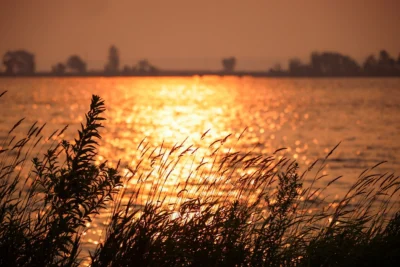
For many, August is the beginning of the end of summer. Final vacations and summer outings are crammed in, student athletes start their pre-season practices, and soon it’s back-to-school time. Wisconsin’s weather usually follows suit: temperatures fall slightly and thunderstorms become less frequent during the final month of summer.
Temperatures
The Outlook: Leaning Warm
Based on forecasts from NOAA’s Climate Prediction Center, most of Wisconsin has a chance of seeing warmer-than-average temperatures during August. The forecast does isolate the southwestern part of the state as having equal chances of above, below, or near average temperatures.
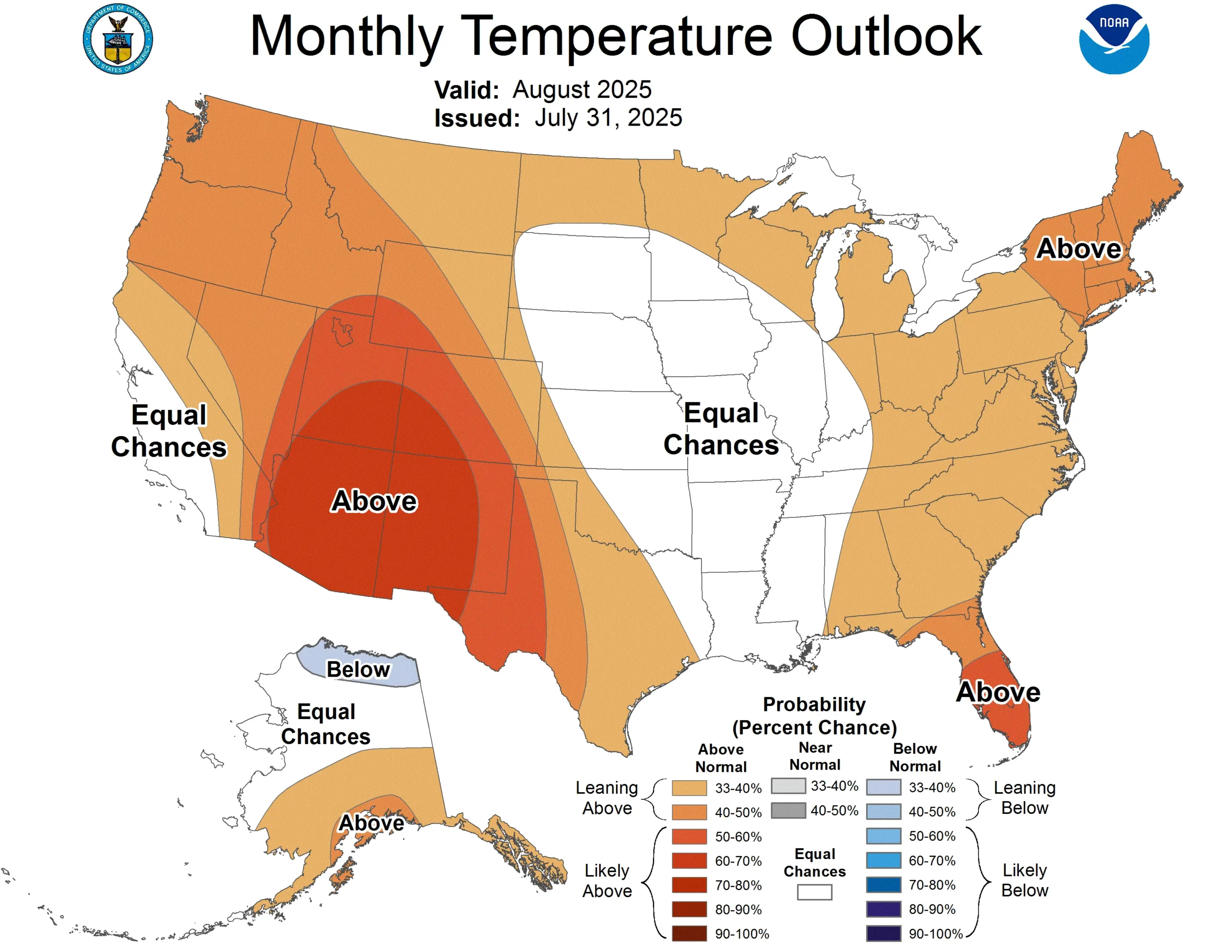
Note that the colors of the above map indicate the probability of above or below average temperatures, not the intensity of the expected warmth or cold. In this case, much of Wisconsin has a 33 to 40 percent chance of experiencing warmer-than-average temperatures. Check out this blog for more information on deciphering climate probabilities.
The Averages
Wisconsin’s average high temperature in August is 78.2 degrees, slightly cooler than the average for July. August typically marks the slow descent into cooler fall weather, but sometimes summer is hesitant to give up its reign. Locations across the state still experience one to four days of 90 degree heat on average during the final month of summer.
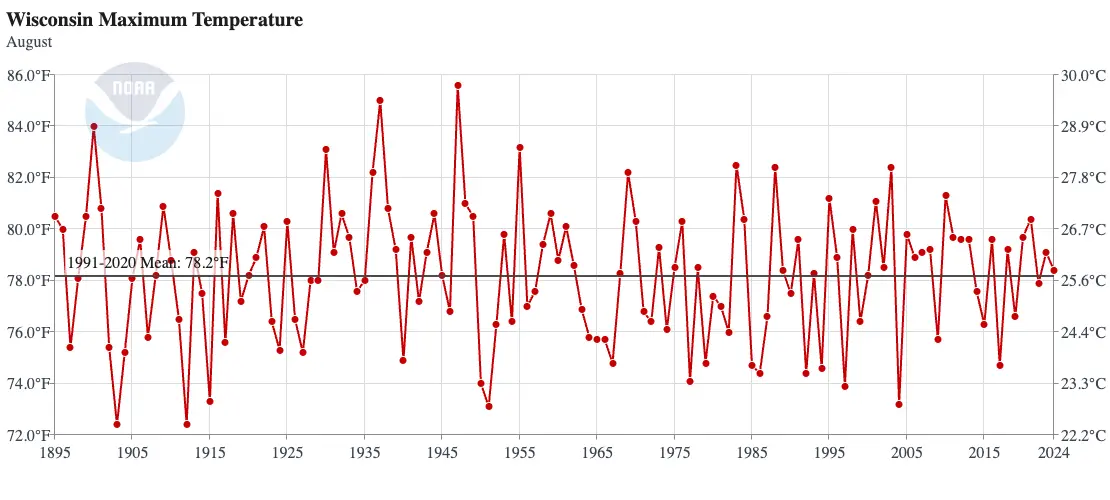
The hottest August on record was in 1947, when the average high was 85.6 degrees and the average low was 61.1 degrees. During an early-month heatwave, many northern locations topped 90 degrees, some even reaching the triple digits! The community of Danbury in Burnett County reported a high temperature of 107 degrees on August 5, 1947.
The coolest August occurred in 1915, with a statewide average temperature of just 61 degrees. Late in the month that year, many cities in the Northwoods reported that overnight temperatures fell below freezing — some even reached the mid-20s! Wausau reached 32 degrees on August 30 of that year, marking the earliest the city had ever dipped below freezing.
Precipitation
The Outlook: To Be Determined
Similar to both June and July, the Climate Prediction Center sees no strong signal for exceptionally wet or dry conditions in Wisconsin, giving us equal chances of being above, below, or near average.
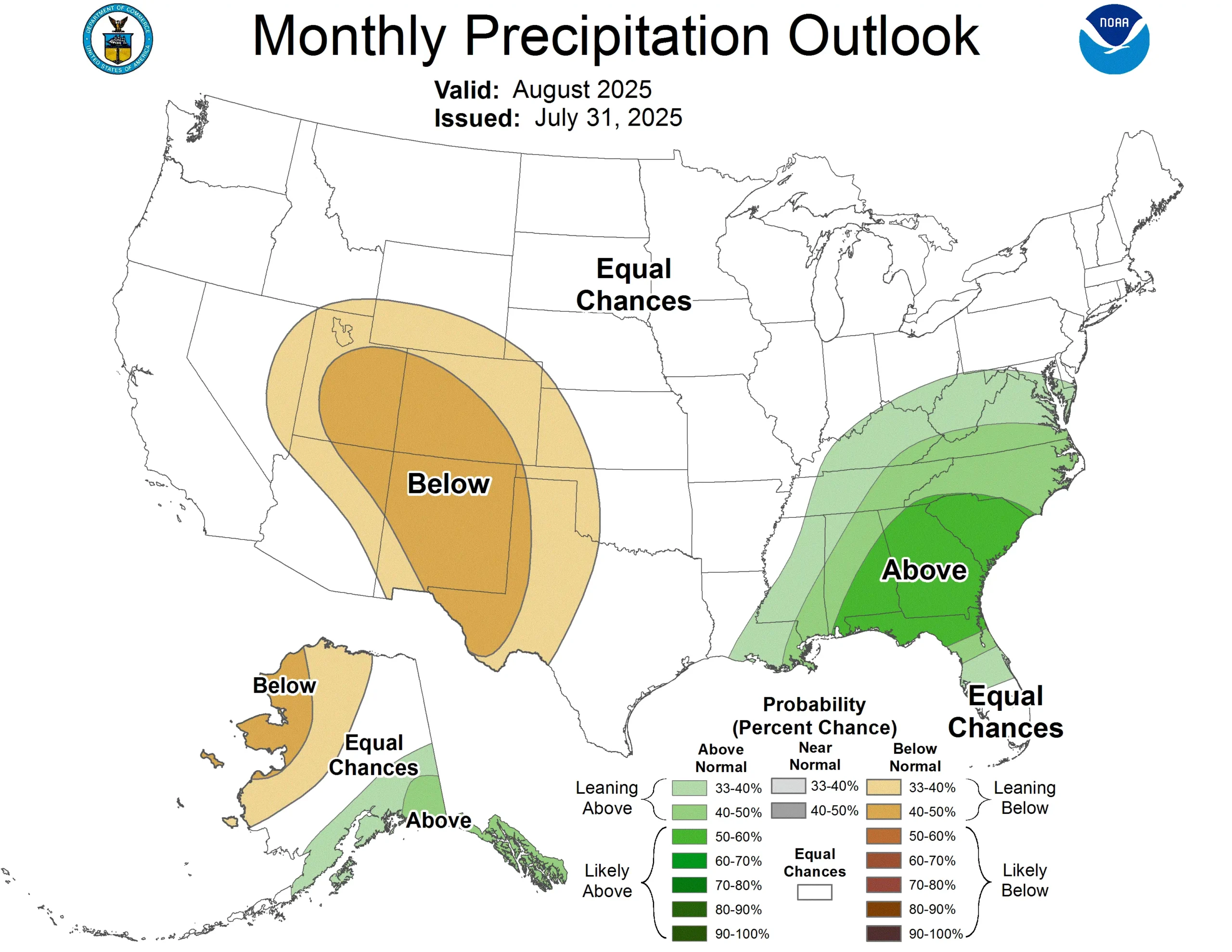
Shorter-term forecasts suggest a slightly rainier trend across the Midwest through the early part of the month.
The Averages
The severe weather season begins to dwindle during August, and average rainfall amounts also continue their decline from July. Wisconsin averages 3.9 inches of rain during the month, almost an inch less than June’s average (Wisconsin’s wettest month).
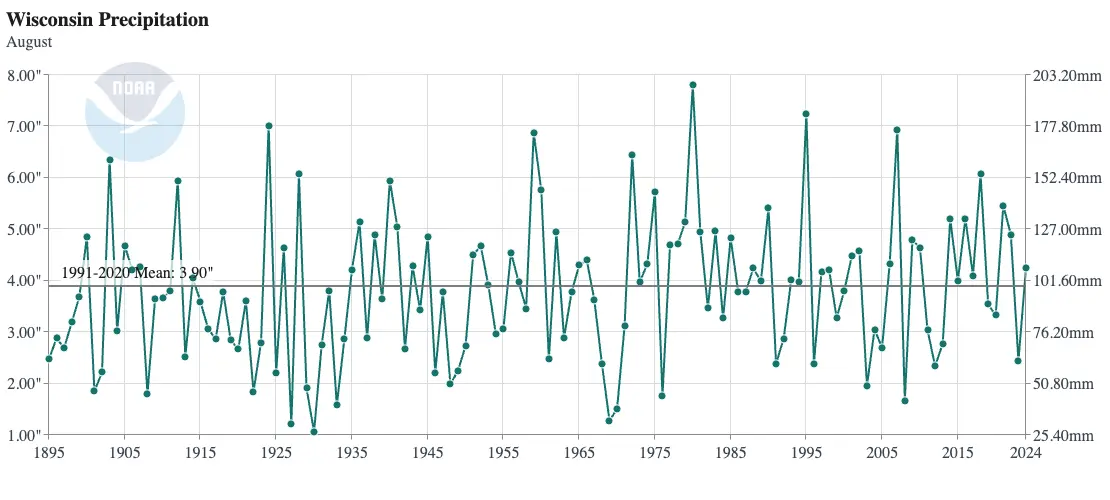
The driest August on record in Wisconsin was in 1930, during the beginning of the Dust Bowl, when the statewide average was barely over an inch — 1.06 inches to be exact! The northwestern region of the state was the driest, with areas near Ashland reporting a tenth of an inch of rain for the entire month. Lake Mills in Jefferson County reported the highest amount of rain in August that year, reaching just over three inches.
August of 1980 was the wettest in Wisconsin’s records, with an average of 7.81 inches in the state. The firehose was aimed at central Wisconsin that month, where many locations reported over 10 inches of rain. Portage in Columbia County measured just over 16 inches of rain that month!
This is a product of the Wisconsin State Climatology Office. For questions and comments, please contact us by email (stclim@aos.wisc.edu) or phone (608-263-2374).